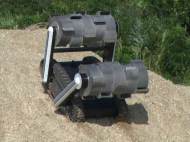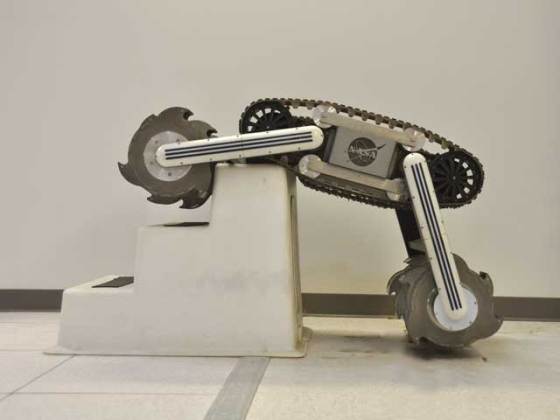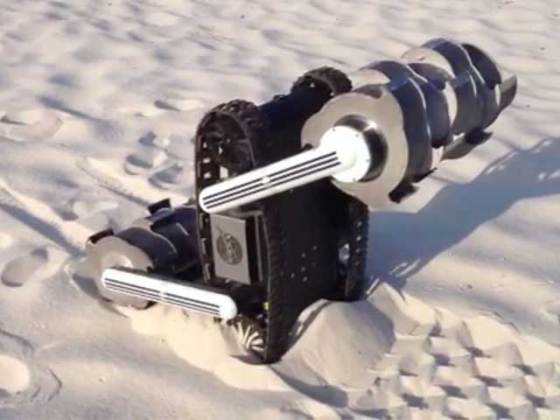RASSOR – Moon-bound surface-mining robot from NASA
 NASA decided to make a diversion from designing and operating robots full of scientific gear used to study other worlds, and came up with Regolith Advanced Surface Systems Operations Robot (RASSOR) – a prototype of a robot which is developed for mining in outer space. At the moment, is far from being space-ready, but the earliest design has provided data that could lead to a reliable lunar soil excavator.
NASA decided to make a diversion from designing and operating robots full of scientific gear used to study other worlds, and came up with Regolith Advanced Surface Systems Operations Robot (RASSOR) – a prototype of a robot which is developed for mining in outer space. At the moment, is far from being space-ready, but the earliest design has provided data that could lead to a reliable lunar soil excavator.
The primary challenge for any digging robot operating off Earth is that they have to be light and small enough to fly on a rocket. However, the lighter you make your robot, the excavating becomes more difficult. RASSOR tackles this problem by using digging bucket drums at each end of the robot’s body that rotate in opposite directions, giving enough traction on one end to let the opposite side dig into the soil.
The RASSOR looks like a small tank chassis with a drum at either end, each attached with arms. The drums are inspired by a previous Lockheed Martin design which performs shallow scoops that shave the soil a bit at a time rather than scoop large chunks of it. It weights about 45kg (100 pounds), and it is about 76cm (2.5 feet) tall with the drums positioned above the main body of the robot.
Because they are mounted on moving arms, drums can act as legs by letting the robot step and climb over obstacles. The team claims that the robot can safely drive off the lander and right itself, flip itself over to get unstuck from fine soil and lift the whole body off the ground to let its treads run smoothly and remove built up soil. RASSOR is designed to easily make itself into a Z-shaped position to drop its soil collection into the processing device.
The robot is designed to skim lunar soil and dump it into a device that would pull water and ice out of the dirt and turn their chemicals into rocket fuel or breathing air for astronauts working on the surface. The device would be part of the lander that carries the RASSOR to the moon’s surface.
Producing water and fuel from the lunar soil would save the tremendous expense of launching the supplies from Earth, since 90 percent of a rocket’s mass normally consists of propellant, which can be made on the moon.
Before daydreaming about the future, you ought to know that the RASSOR can gather about 18kg (40 pounds) of lunar soil in one go. With that capacity and current speed, it would need to operate about 16 hours a day for five years in order to gather enough material for usable amounts of resources for the production platform.
In order to simulate the Moon’s gravity field, the researchers used a weight off-loading harness strapped onto robot. The group tried out RASSOR on several surfaces, including the crushed river rock dug up from the crawlerway. The rock, even though pulverized by the gigantic crawlers, is not a great substitute for lunar soil, but the researchers stated that it is sufficient to prove the robot will manage whatever the moon soil offers.
The tracks showed some flaws, mostly relating to the pebbles and sand particles clogging the gears and making the track slip off. The researchers assume that part of the problem might be the rubber material the tracks are made of, but a lunar version of the robot would use a different (possibly metallic) material.
The team claims they have at least one major decision to make before constructing the second generation RASSOR prototype, and that is to keep going with tracks like those that tanks use, or switch to wheels. The folks from NASA are already designing RASSOR 2 – a prototype that would be much closer to what NASA could actually launch in the future.











Leave your response!